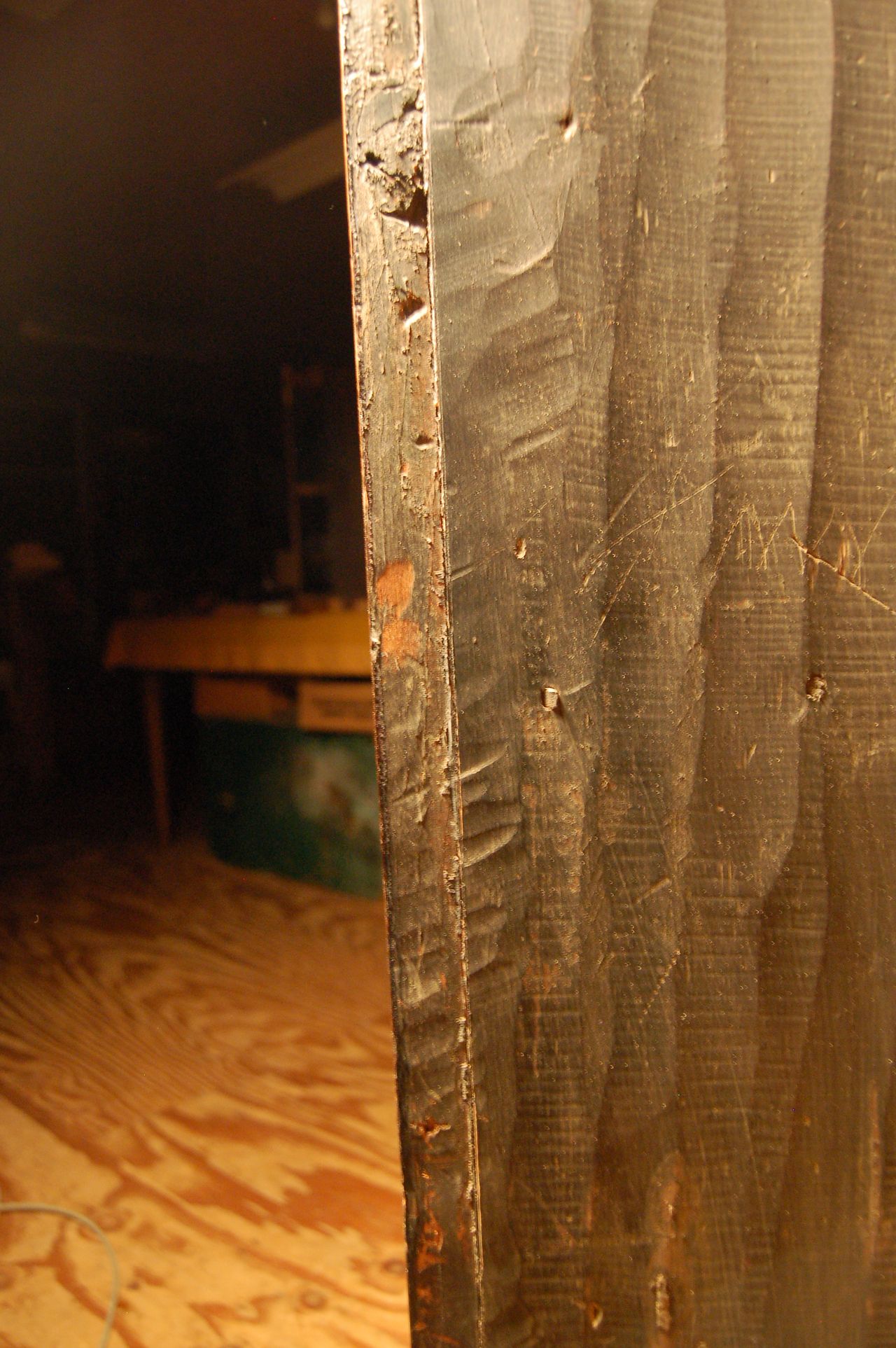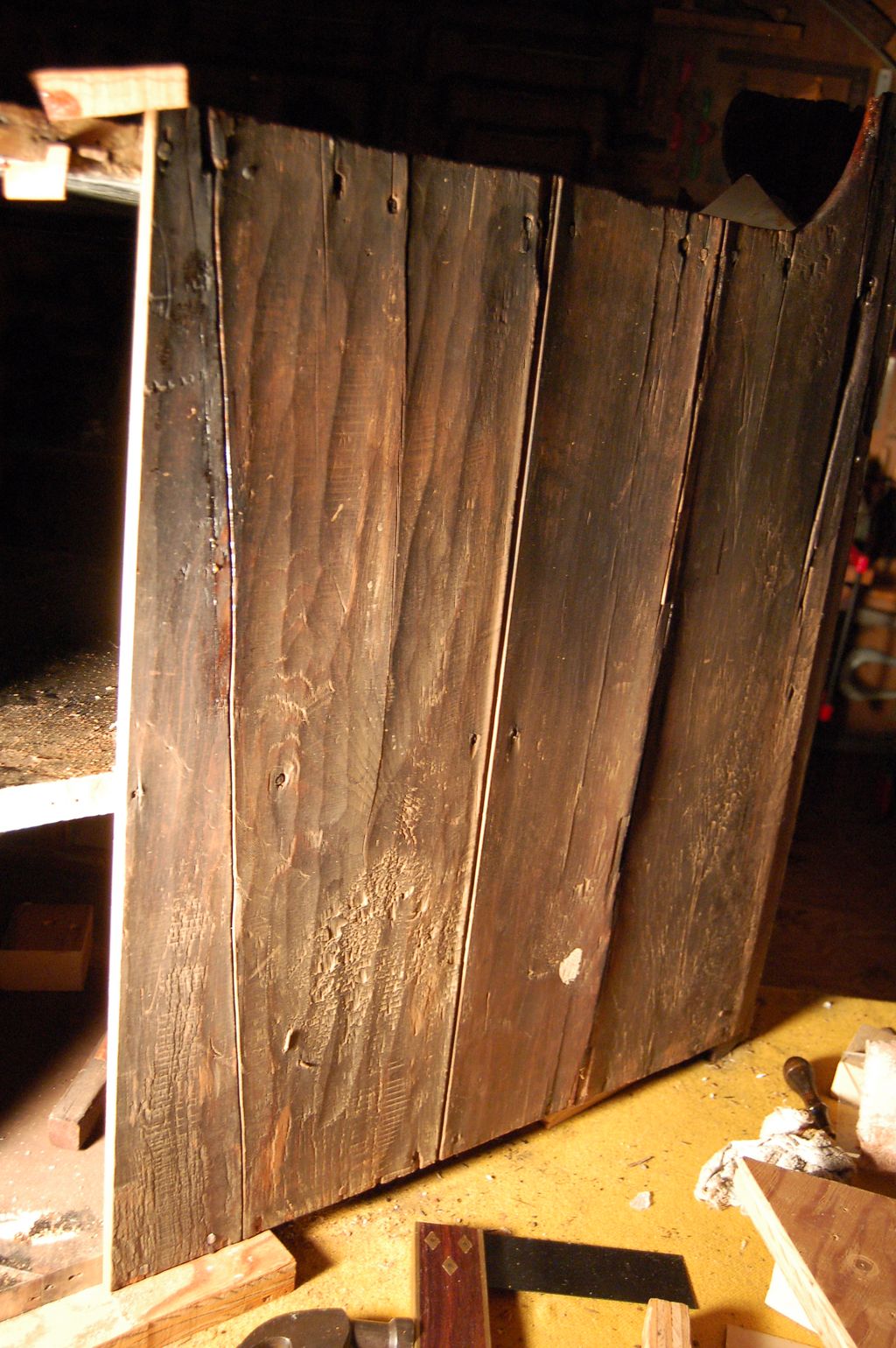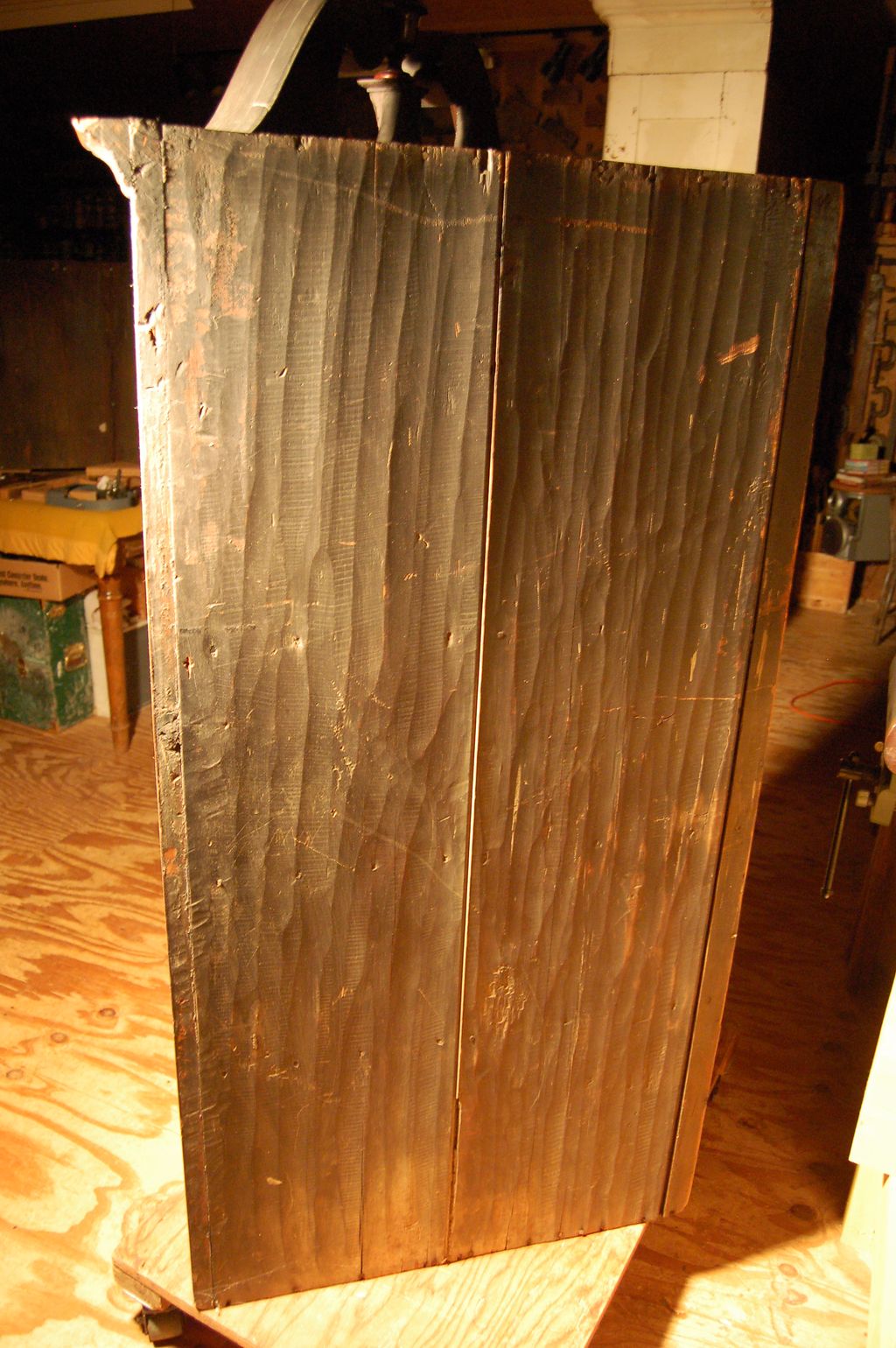The Mystery Corner Cupboard – Chapter 3
December 07, 2014
Continuing the close examination, there also appeared to be adze marks, which indicated an earlier date, among the near pristine scrub(hand) plane marks overall.
Puzzling at first were large numbers of rusty wire nail heads – early 1900’s at best. But soon I found older hand-wrought nails of a type dating from 1790 to 1835.
Findings. What at first appeared to be a poor 1850’s (or later) reproduction, on closer examination proved to be a much finer, and older piece. The more I studied the Chippendale ideal, and other corner cupboards of the era, the more I came to appreciate this piece as being among the better examples of its type.
Later, when a professional appraiser was brought in, he went through a similar process of surprised appreciation for this piece. He confirmed my assessment of its authenticity and quality, suggesting it was indeed a Philadelphia piece, about 1795, possibly made in the nearby hamlet of Germantown.
After further study, however, he suggested that, because the drawers seemed in a later style (among other evidences), that it was actually a much later piece, around 1840, albeit well made, and was a reproduction. While I accepted this at first, I believe my advantage of thoroughly knowing the piece has enabled me to make a better informed assessment of age and authenticity, all things considered. While some reproductions were made toward the mid 1800’s, they were primarily machine made, including their nails. This piece was hand made, period, nails included. This type of nail was not made after 1835, but was made, certainly in urban areas, as early as 1790.
The appraiser’s suggestion that the later Empire type drawers argue for a later date for the entire piece seems doubtful for a couple of reasons. One, the drawers seemed to show less wear than the rest of the piece. It’s more likely they were an “upgrade” to make the piece appear more up-to-date, a common practice. (This could be true of the doors as well.) Also, to make a custom piece as fine as this primarily in a previous style, with significant elements of a later style, seems unlikely as making an Art Deco chair with Danish Modern legs. This is not to say it doesn’t happen ever, but I have seen many a fine piece of one era, clumsily ‘updated’ with superficial elements of a later era. In short, I think this piece is primarily genuine and authentic.
Coming next: The Adventure of Restoration





